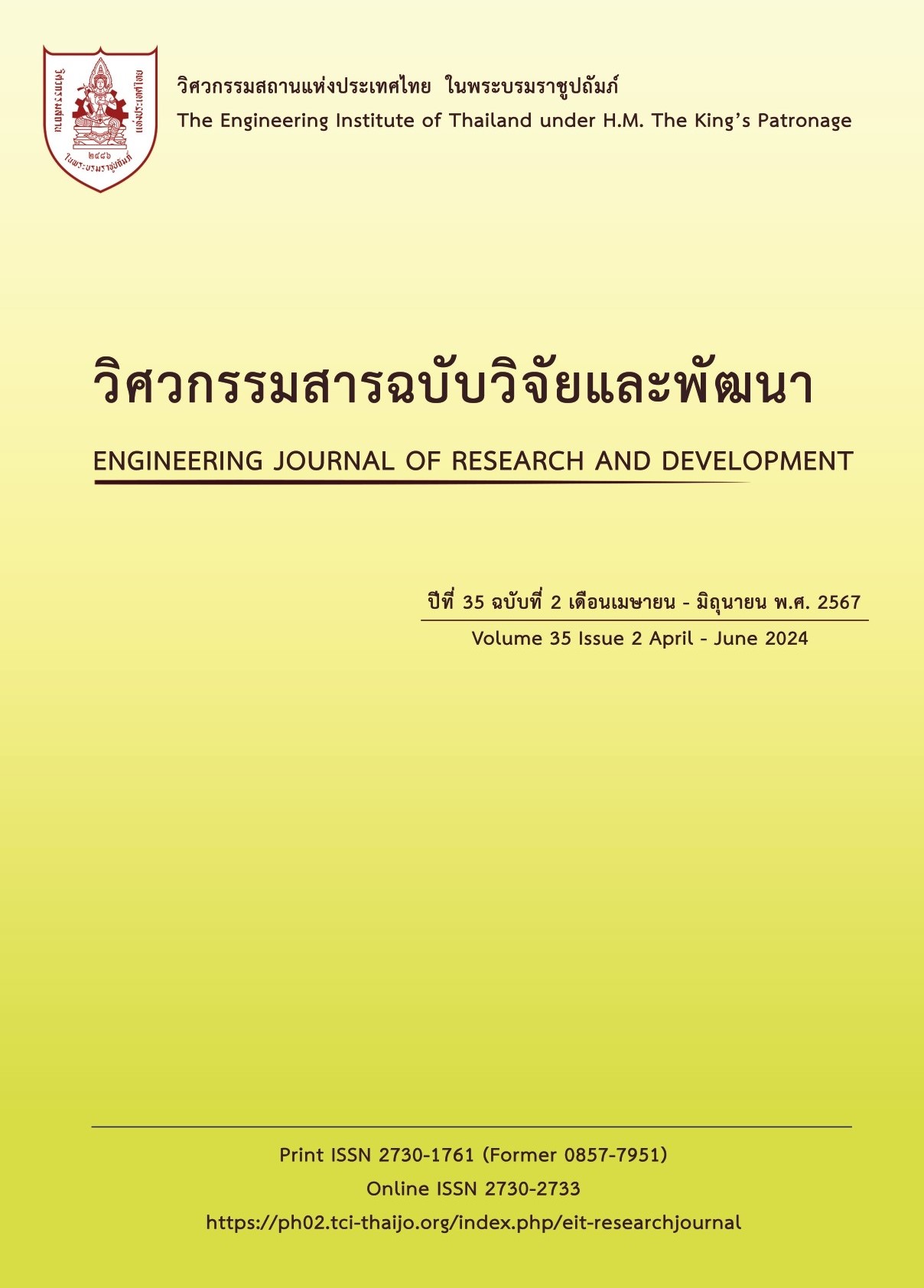BUILDING HEIGHT ESTIMATION PRODUCTION FROM OPEN SATELLITE IMAGERY BY GRADIENT BOOSTING REGRESSION TECHNIQUE
Main Article Content
Abstract
Building height data is crucial for urban environment studies, urban physical quantity calculations, three-dimensional mapping, and spatial analysis. This research focuses on estimating building heights in the Bangkok urban area using freely available RADAR and optical satellite imagery. The study employs gradient boosting regression techniques, leveraging building height data from a digital surface model obtained through unmanned aerial vehicle (UAV) mapping for model training and testing. Results indicate that combining RADAR and optical imagery yields higher accuracy than using a single type of imagery. The gradient boosting regression model using mixed satellite imagery achieved RMSE of 11.726 meters for buildings under 100 meters and 7.915 meters for buildings under 50 meters. However, the method exhibits limitations, including a low coefficient of determination, making it challenging to accurately estimate the heights of very tall buildings.
Article Details

This work is licensed under a Creative Commons Attribution-NonCommercial-NoDerivatives 4.0 International License.
The published articles are copyright of the Engineering Journal of Research and Development, The Engineering Institute of Thailand Under H.M. The King's Patronage (EIT).
References
Alahmadi, M., Atkinson, P., Martin, D. Estimating the spatial distribution of the population of riyadh, saudi arabia using remotely sensed built land cover and height data. Computers, Environment and Urban Systems, 2013, 41, pp. 167–176. Available from: https://doi.org/10.1016/j.compenvurbsys.2013.06.002 [Accessed 20 February 2024].
Resch, E., Bohne, R.A., Kvamsdal, T., Lohne, J. Impact of urban density and building height on energy use in cities. Energy Procedia, 2016, 96, pp. 800–814. Available from: https://doi.org/10.1016/j.egypro.2016.09.142 [Accessed 20 February 2024].
Perini, K., Magliocco, A. Effects of vegetation, urban density, building height, and atmospheric conditions on local temperatures and thermal comfort. Urban Forestry and Urban Greening, 2014, 13, pp. 495–506. Available from: https://doi.org/10.1016/j.ufug.2014.03.003 [Accessed 20 February 2024].
Microsoft Bing Maps. Worldwide building footprints derived from satellite imagery: GitHub, 2022. Available from: https://github.com/microsoft/GlobalMLBuildingFootprints#will-there-be-more-data-coming-for-other-geographies [Accessed 20 February 2024]
W. Sirko, S. Kashubin, M. Ritter, A. Annkah, Y.S.E. Bouchareb, Y. Dauphin, D. Keysers, M. Neumann, M. Cisse, J.A. Quinn. Continental-scale building detection from high resolution satellite imagery. arXiv:2107.12283, 2021.
Li, X., Zhou, Y., Gong, P., Seto, K.C., Clinton, N. Developing a method to estimate building height from sentinel-1 data. Remote Sensing of Environment. 2020, 240, 111705. Available from: https://doi.org/10.1016/j.rse.2020.111705 [Accessed 20 February 2024].
Li, M., Koks, E., Taubenböck, H., van Vliet, J. Continental-scale mapping and analysis of 3d building structure. Remote Sensing of Environment. 2020, 245, 111859. Available from: https://doi. org/10.1016/j.rse.2020.111859 [Accessed 20 February 2024].
D. Frantz, F. Schug, A. Okujeni, C. Navacchi, W. Wagner, S. van der Linden, P. Hostert. National-scale mapping of building height using sentinel-1 and sentinel-2 time series. Remote Sensing of Environment, 2020, 252, Article 112128, Available from: https://doi.org/10.1016/j.rse.2020.112128 [Accessed 20 February 2024].
Wan-Ben Wu, Jun Ma, Ellen Banzhaf, Michael E. Meadows, Zhao-Wu Yu, Feng-Xiang Guo, Dhritiraj Sengupta, Xing-Xing Cai, Bin Zhao, A first chinese building height estimate at 10 m resolution (cnbh-10 m) using multi-source earth observations and machine learning. Remote Sensing of Environment, 2023, 291, 113578, ISSN 0034 4257, Available from: https://doi.org/10.1016/j.rse.2023.113578 [Accessed 20 February 2024].
Bannakulpiphat, T., and Santitamnont, P. New era of mapping products from uav-based oblique camera system. In: The 5th International Conference on Civil and Building Engineering Informatics, Bangkok, July 2023, pp. 231-236
Santitamnont, P. Research on Thai building modelling: GitHub, 2022. Available https://github.com/phisan-chula/Thai_Bldg_Model [Accessed 20 February 2024]


